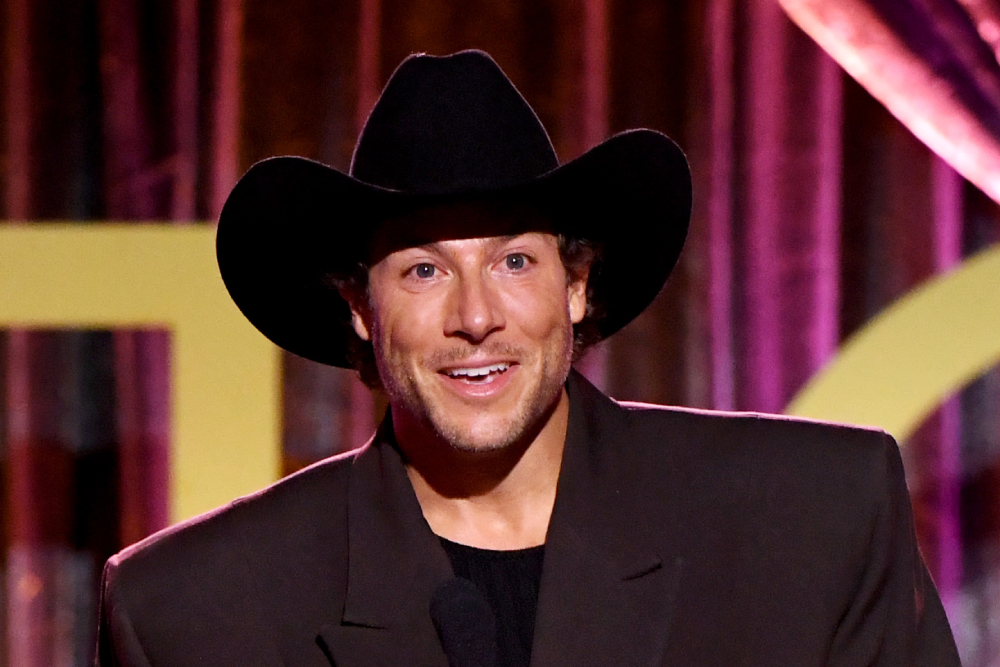Exploring the vibrant world of queer rodeo: ’National Anthem’ and its impact
Luke Gilford knows about rodeos — his father was a rider in the Professional Rodeo Cowboys Association. So it’s no surprise that the gay celebrity and fashion photographer turned his camera on the queer rodeo circuit for his 2020 debut photography book, “National Anthem: America’s Queer Rodeo.”
It’s that work that inspired the Colorado native’s feature directorial debut, also called “National Anthem.” The movie, which Gilford co-wrote with Kevin Best and David Largman Murray, stars Charlie Plummer (“Wildflower,” TV’s “The First Lady”) as Dylan, a young man who goes to work on a ranch that is home to a group of queer rodeo performers. An unexpected romance blooms between him and a trans woman, played by Eve Lindley (“Bros,” “After Yang”), as Dylan becomes more attached to his new chosen family.
A new era of queer cinema
“’Brokeback Mountain’ was almost 20 years ago,” says Gilford, who splits his time between New York and Los Angeles and has had his work published in Vogue, Vanity Fair, and the New York Times. “Those were straight actors, and it was a tragedy,” he says. “’National Anthem’ has the real people. Many of the real people in the [rodeo] community are in the film. It’s about tenderness and love and celebration and queer joy instead of tragedy. I’m excited for this moment. Audiences are really responding. People are so warm and excited and dressing up for the theatrical experience.”
The movie earned several awards during its festival run, including best first feature at San Francisco’s Frameline and best debut director at London’s Raindance Film Festival. “My dentist texted me the other day and was like, ‘You need to build a new room in your house for all these awards,’” Gilford says, laughing.
A personal journey
Charlie Plummer, Eve Lindley, and Mason Alexander Park in “National Anthem.”
The photographer-director’s mother and father were in the audience with him when Frameline handed out its honors: “It’s very cool to be able to share it with my parents.”
But it wasn’t always that way. Gilford admits he was worried about telling his dad about the queer rodeo circuit. “I actually didn’t talk to him about it because I thought that he would think it’s just like the Village People or something,” he says. “That’s what was so striking to me in person growing up around real cowboys. I knew that this wasn’t a costume, that this was a real way of life. It wasn’t an image. It wasn’t until the book was really a real thing. I think my dad was pretty floored by that sort of resilience. My parents have my book on display in the house, which to me is just such a beautiful gesture for our relationship as well.”
The choice between documentary and narrative
Gilford has been asked many times why, with his photographer background and the book’s success, didn’t he pursue a documentary about the queer rodeo. (His feature directorial debut was shot at real queer rodeo shows.)
“I didn’t want to just make something completely scripted where we would be staging these rodeos,” he explains. “The authenticity of the real community was essential, but I also wanted to tell a story. I love working with actors and drawing out performances. The idea of blending actors with the real community was so inspiring and thrilling as an idea. Also, I wanted to steer away from the stories of trauma and all of that. If it were a documentary, I think it would really go towards that.”
He adds, “These stories have all been told. Where are the stories about queer joy and celebration and love within these communities? Because that’s real too. I think especially right now, we need some hope.”
Rodeo as a form of drag
And while mainstream rodeo may have a reputation of being bastions of straight cisgender homophobic masculinity, Gilford insists, “Rodeo is drag performance. There’s rhinestones and hairspray and nail polish and tight denim. Even when it’s the mainstream rodeo, it’s still drag.”
“National Anthem” is in theaters now. For more information and to watch the trailer, visit National Anthem Trailer.
Reflecting on the future
As we reflect on the impact of “National Anthem,” it’s clear that this film is more than just a story about a queer rodeo. It’s a celebration of love, resilience, and the vibrant tapestry of human experience. The film challenges stereotypes and invites audiences to see the beauty in diversity. In a world that often feels divided, “National Anthem” offers a message of hope and unity, reminding us that joy and love can be found in the most unexpected places.

 Italian
Italian







